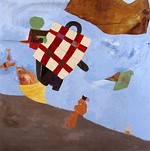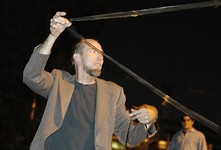Proper Exposure
A new exhibition gives eight of the state's finest photographers – who happen to be women – their due
By Benné Rockett, Fri., Feb. 10, 2006
The omission of women artists in the tomes of art history – namely Janson's History of Art, circa 1960 – can be attributed in part to poor methodology. A work that excludes certain figures is adopted as definitive, used as a reference resource for subsequent writings, and thus the cycle of exclusion is perpetuated. In the late 1980s, Newhall and Gernsheim authored synoptic histories of the medium of photography that unequivocally elevated the women included to the level of their male counterparts. Still, their works read as histories of male photographers. In 1987, Congress found information on women's contributions to history so lacking that it established March as National Women's History Month. Wilhelmina Cole Holladay, a primary donor to the National Museum of Women in the Arts, Washington, D.C., started collecting women artists when she consulted a standard art history volume and found a blank canvas.
Many well-educated adults can't name more than five women artists. Oswald is attempting to change that through this showcase. Examining its list of past and future exhibitions, as well as its inventory of prints, it is clear that this gallery is dedicated to the inclusion of both 19th- and 20th-century master women photographers. (Case in point: Running simultaneously with the Texas Women's Photography Showcase, Oswald's gallery in Jackson, Wyo., is showing work by Annie Leibovitz.) The eight women highlighted in the showcase were selected from hundreds of Texas photographers who submitted work. Their works testify not only to the quality of the images created by these individual photographers but to the depth and breadth of photographic work being produced at this moment in our state.
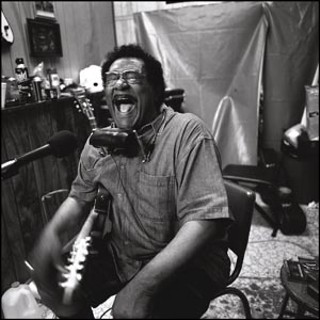
Having been raised in New Orleans with relatives living in Mississippi, the images of Melissa Ciano's Deep South moved me between a sense of familiarity and an awareness of otherness. Born and raised in New York City, Ciano received her MFA in photography from the School of Visual Arts. Austin is now her home, but her proclivity to make strange the troubled South relies on her outsider status. The Museum of Modern Art's 1967 exhibition "New Document" featured works by Diane Arbus, who was included by museum curator John Szarkowski because of her unique way of photographing the "real." Ciano's toned gelatin silver print, John Weston, Shale, Arkansas, 2002, shakes the viewer into feeling the depth of the Delta blues.
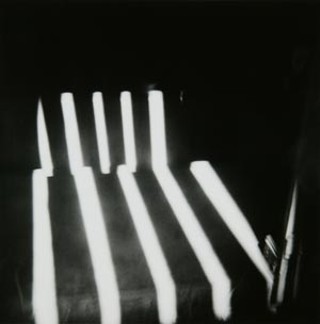
Luminous intermissions are captured by Judith Birdsong as she focuses on the effects of light on architectural features. I can easily imagine Birdsong spending days anticipating the gift of perfect geometric pattern abstracting the underlying structure. Her transformations of corporeal structures is reminiscent of works by Ruth Bernhard, who is featured in the print holdings at Oswald. Though Bernhard is better known for her studies of female nudes, one can find striking similarities between the two photographers. When I saw Birdsong's Doorway to the Bath House (Casa Perez), 2004, I was immediately reminded of Bernhard's Straws, 1938. The underlying beauty of light is experienced in both works. As an aside, Birdsong's portrait was photographed by Austin photographer Debra Sugerman, an outstanding artist in her own right, who has explored similar effects.
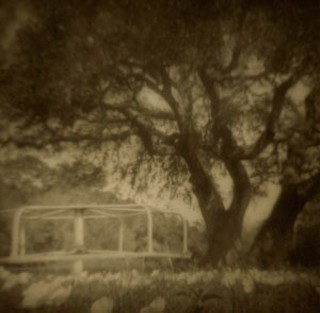
A Time Left Behind, the series by Glynda Hatfield, captures our abandoned childhoods. The images were taken in an overgrown, deserted playground between Ruidoso and Cloudcroft, N.M. In her biographical statement, Hatfield writes that "what an individual sees of the world comes from our own background, experiences, taste, and attitude. What we really see is defined by our feelings, memories, emotions, and intuitive senses." Hi Ho Silver, Away, 2003, (cover image) is a perfect example of why, despite having a Holga, an incredible handmade pinhole, and a half-dozen Polaroid cameras, I am not a photographer. Mature technique, experience, and altered view are the only way to create such a captivating image.
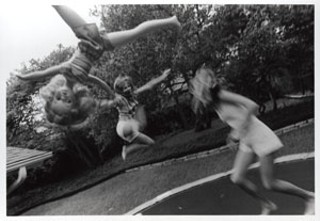
When I first saw Debra Rueb's images, I was reminded of a citation on Nancy Ford Cones, another photography pioneer, that I had read in preparation for this article. Cones was awarded second prize in a 1905 Kodak competition for her photograph Threading the Needle. The title isn't the striking note, but rather the fact that first and third places' winners were men. What a thrill Cones must have experienced when she discovered that the other winners were Edward Steichen and Alfred Steiglitz. Rueb's Tammy Jumps for Joy, 1998, captures the mental and physical agility behind the work of many women photographers. With a career beginning in 1970, Rueb is officially the senior photographer in this exhibition.
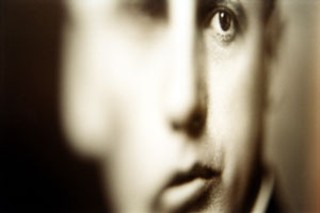
Since 1996, Sybil Miller has been traveling the United States photographing paintings and rephotographing photographs of government officials that grace the surroundings of the rotunda in each state's capitol building. Government officials are considered by many to be myopic, yet Miller's Lincoln, Nebraska, 2003, opens that envelope just enough to rouse intrigue. With the deconstruction and manipulation of governmental portraits in the Statesmen series, Miller's work is linked to that of postmodern and controversial photographer Sherrie Levine. During the late 1970s, Levine took photographs of some Walker Evans photographs that were basically indistinguishable from Evans' originals. Both Miller's and Levine's act of rephotographing photographs demonstrate that images are as much found as they are made.
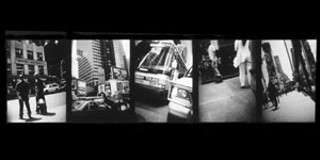
The density of cities, packed with people, history, and information are absolutely expressed in the parallactic frames of Betsy Haas, who uses a half-frame camera to capture consecutive moments in the street life of cities. The resultant images, all printed personally by Haas, are akin to squeezing twice as many pegs into half the number of pre-existing holes and resonate with the camera's ability to document realism. In 1939, American master photographer Berenice Abbott wrote that her series Changing New York, a Federal Art Project of the Works Progress Administration, was intended "to preserve for the future an accurate and faithful chronicle in photographs of the changing aspect of the world's greatest metropolis, … to produce an expressive result in which moving details must coincide with balance of design and significance of subject." Haas' Academy Tours, 1997, meets the criteria that Abbott set for herself some 70 years earlier.
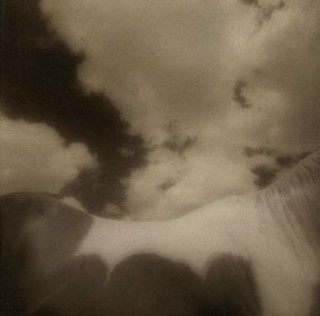
Amanda Stahl and Glynda Hatfield took one another's photographs for the biography sections of the Oswald site. Specifically wanting her hair blowing in her face, Stahl takes on the ethereal quality of her prints. Through Stahl's eyes, Maggie, 2000, allows us to see the distinct survival patterning advantages behind animal hides. Many viewers might be surprised to discover that Stahl is a Certified Public Accountant and serves as treasurer for the Texas Photographic Society. "In accounting, the debits must equal the credits or the general ledger is out of balance. A similar balance must occur within the borders of an image. The tension of opposites – light versus dark, foreground versus background, horizontal versus vertical – are similar to debit versus credit. The composition must be balanced to be pleasing to the eye."
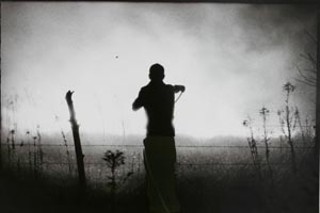
A career documenting your lifestyle presents unique challenges and opportunities. When Shelley Wood and her husband Jason Lambert, who took her portrait for the biography section of the Oswald site, married in 1999, they created LamWood Ranch (LWR). Wood comments that, "simply put, LWR is life as it happens living here in the country with animals. I take the photographs, but together we create the setting. This body of work would not be possible without Jason." Knowing what a photographer, and in some cases her family, went through to get the shot can add to the viewer's appreciation. While it might appear to show an archer's stance framed by the glow of morning sunrise, in actuality New Year's Day, LWR, captures Jason attempting to put out a fire with a watering hose.
The Texas Women's Photography Showcase is on display through Feb. 28, at Oswald Gallery, 714 Congress. For more information, call 494-9440 or visit http://www.oswaldgallery.com/site/exhibit-txwomen/exhibit-txwomen.html.





